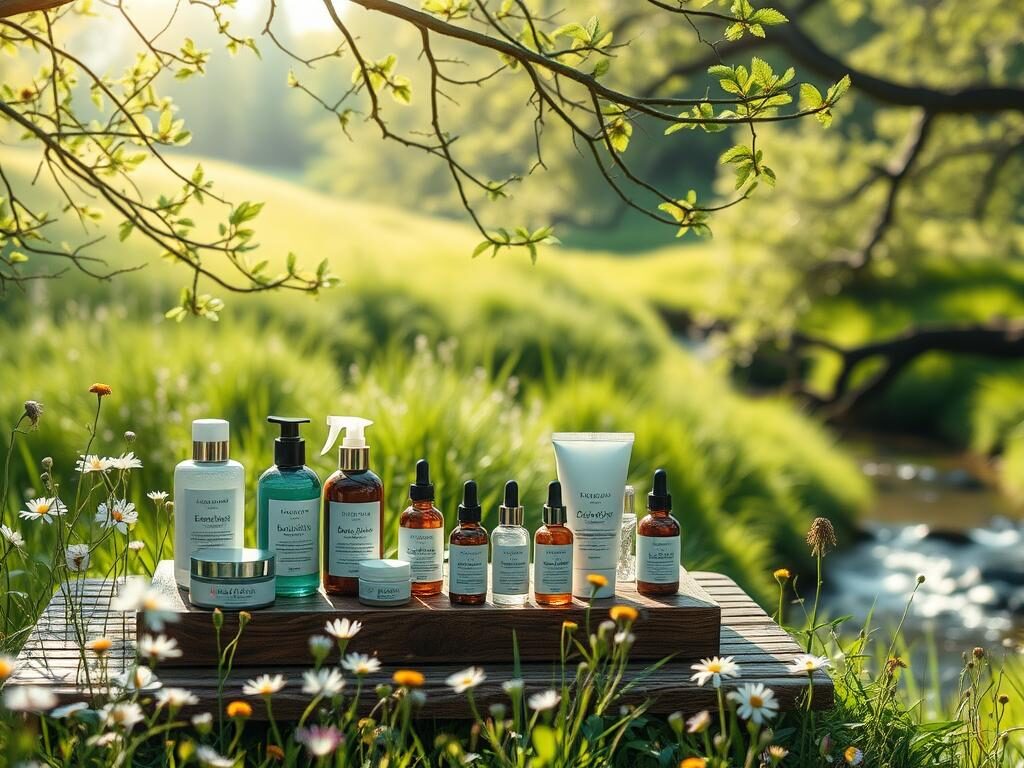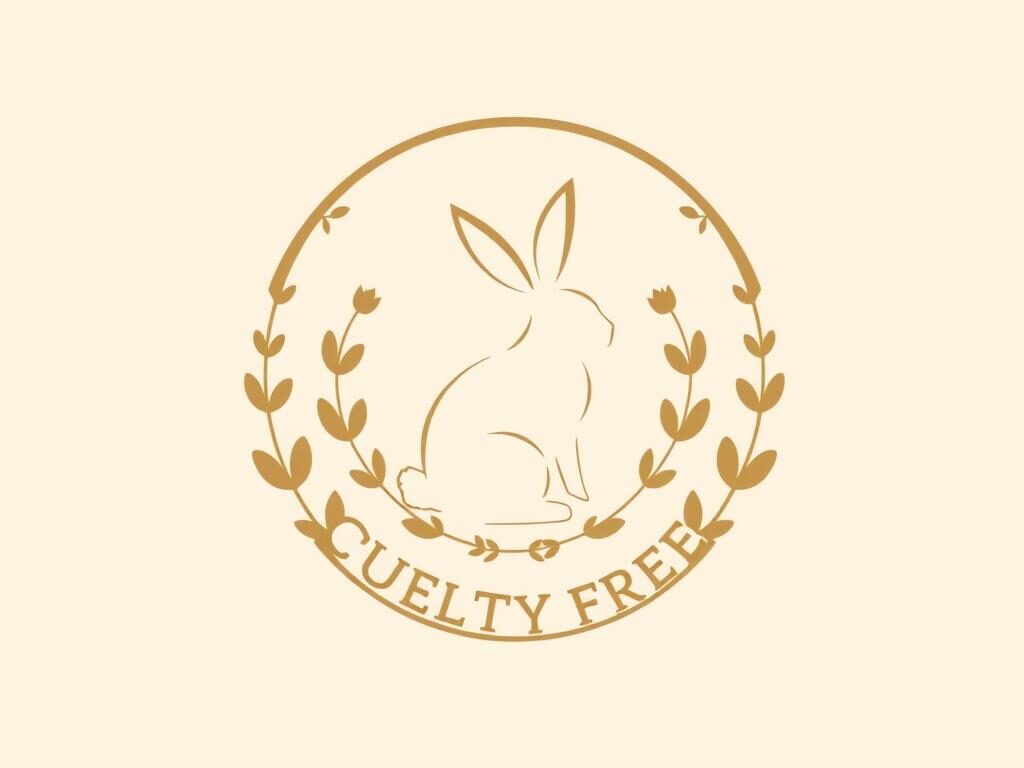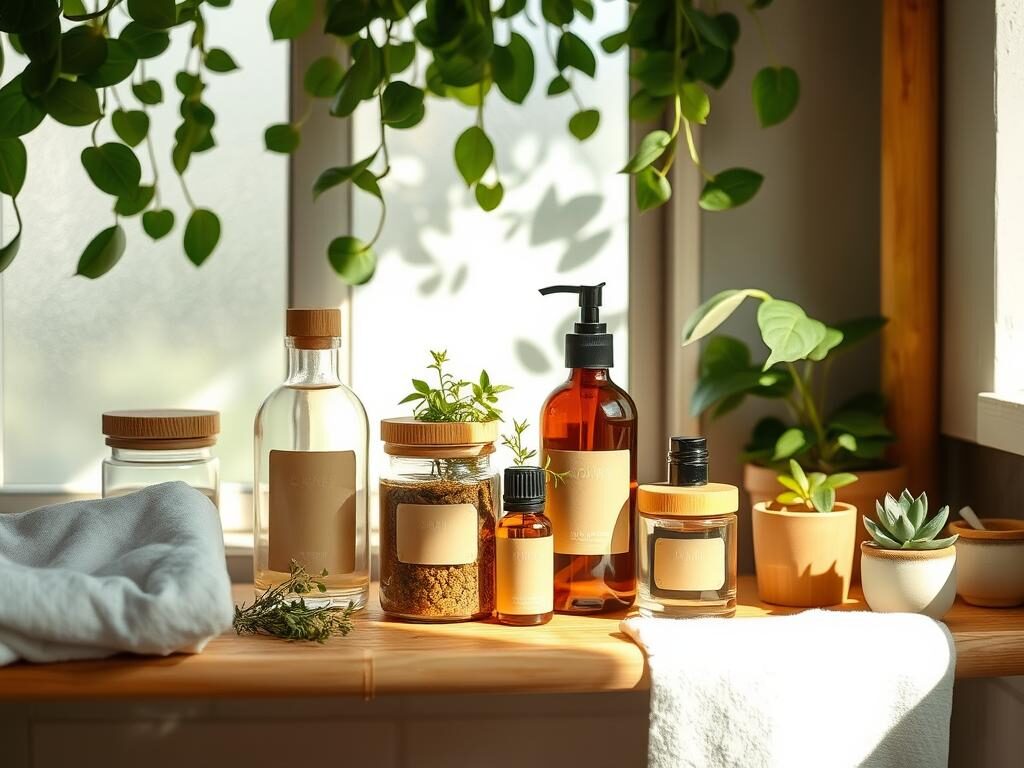Physical Address
304 North Cardinal St.
Dorchester Center, MA 02124
Physical Address
304 North Cardinal St.
Dorchester Center, MA 02124
In today’s beauty world, “conscious beauty” is a big deal. It’s about making choices that are good for you and the planet. More and more people want to choose beauty products that are both healthy and eco-friendly.
Finding the right skincare that fits your values can be a journey. It’s about making smart choices and helping create a greener future. This guide will help you understand the clean beauty movement. It will also show you how to pick skincare that’s good for your skin and the planet.

In recent years, the beauty industry has changed a lot. This change is because more people want clean beauty, green beauty, and ethical skincare. They understand how their beauty products affect their health and the planet.
The clean beauty movement started because of worries about traditional beauty products. People started checking ingredient lists for harmful chemicals like parabens and phthalates. Now, more people choose natural and organic products for their beauty routines.
There’s also a big push for ethical skincare. People want to support brands that care about the planet and treat workers fairly. This has made beauty companies rethink how they make and package their products, leading to more eco-friendly and socially conscious options.
The growth of conscious beauty is thanks to more people being aware and educated. Social media, blogs, and influencers have helped highlight the problems with traditional beauty. This has pushed beauty brands to be more open and sustainable.
“The shift towards conscious beauty is not just a trend, but a fundamental change in consumer values and expectations.”
In the world of clean beauty and sustainable cosmetics, it’s easy to get lost in all the claims and certifications. But knowing what these labels mean is key to making smart choices and supporting good brands. Let’s explore the world of clean beauty labels and uncover their secrets.
When choosing clean beauty products, look for these certifications and claims:
By knowing these labels, you can find sustainable cosmetics that match your values and help create a cleaner, greener world.
But remember, not all claims are the same. Be cautious of terms like “natural” or “eco-friendly” without third-party proof. Always check to make sure the brand’s practices and ingredients meet your standards for ethical and sustainable clean beauty.
The eco-friendly beauty movement is growing fast. Knowing what’s in your skincare is key. Choosing between natural and synthetic ingredients is tricky, with both sides having good and bad points.
Natural ingredients like plant oils and minerals are often seen as better for the planet and skin. But, some synthetic ingredients are made to be better and last longer. They can be more effective and sustainable than natural ones.
Some ingredients, natural or synthetic, are bad for you and the planet. Avoid parabens, sulfates, phthalates, and synthetic fragrances. They can harm your health and the environment.
How ingredients are sourced and made is vital for eco-friendly beauty. Practices like fair trade and organic farming reduce harm to the environment. They also help local communities.
| Ingredient Type | Examples | Sustainability Considerations |
|---|---|---|
| Natural | Shea butter Aloe vera Jojoba oil | Ethical and fair-trade sourcing Organic farming practices Minimal processing and waste |
| Synthetic | Hyaluronic acid Vitamin C derivatives Retinol | Renewable and biodegradable sources Efficient manufacturing processes Recyclable or reusable packaging |
Understanding eco-friendly beauty ingredients helps you make better choices. It supports sustainable beauty practices.
“The true price of beauty should be measured not just in dollars, but in its impact on the planet and the people who produce it.”
In the world of cruelty-free products and ethical beauty practices, knowing about cruelty-free certification is key. This seal shows that products weren’t tested on animals. It also shows the brand’s dedication to animal welfare.
The process to get cruelty-free certification is tough. Groups like PETA, Cruelty-Free International, and the Leaping Bunny Program have strict rules. They check a company’s supply chain, how products are made, and what ingredients are used. This ensures no animal testing happened during product development.
“Choosing cruelty-free products is not just a personal choice, but a powerful way to support a more compassionate and sustainable beauty industry.”
But, there are challenges in the world of cruelty-free certification. Some people get confused about what “cruelty-free” really means. There’s also a lack of clear standards. It’s important to look for trusted certifications and understand what they mean.
By choosing cruelty-free products and ethical beauty practices, you show your values in what you buy. You also help make the beauty industry kinder and more sustainable for the future.

The need for eco-friendly beauty products is on the rise. This has made sustainable packaging a key part of the conscious beauty movement. People want beauty brands that use eco-friendly packaging. The beauty industry’s use of plastic harms the environment, and it’s time to find better options.
Plastic-free packaging is becoming more common in beauty. Options include glass, aluminum, and materials like bamboo and paper. These choices are better for the planet and often look more premium, attracting eco-conscious consumers.
Recycling and reusing beauty containers can help the environment. Many brands offer recycling programs in stores or by mail. Some even offer discounts for using the same containers over and over.
For those wanting to go further, zero-waste beauty is a growing trend. It includes items like solid shampoo bars and refillable makeup compacts. These products help reduce waste and support a circular economy in beauty.
By focusing on sustainable packaging, the beauty industry can lessen its environmental impact. This meets the demand for environmentally friendly beauty and sustainable cosmetics. Brands that lead in sustainable packaging will stand out in the future.
The conscious beauty movement is growing fast. Creating an ethical skincare routine is now key. It’s good for your skin and helps the planet.
Start by knowing your skin type and what it needs. There are products made with care for all skin types. Look for brands that use natural, sustainable, and cruelty-free ingredients.
Mindful beauty is more than just products. It’s about how you care for your skin. Learn about the products you use and their impact on the planet. By choosing wisely, you help the beauty industry be more sustainable and feel good about your skincare.
“The true beauty of a woman is reflected in her soul. It’s the caring that she lovingly gives, the passion that she shows, and the beauty of a woman only grows with passing years.” – Audrey Hepburn
Creating an ethical skincare routine is a journey. Be patient, try new things, and find what works for you. By making smart choices, you can have healthy, glowing skin and support a greener future.

Our beauty choices affect the environment a lot. From the carbon footprint of making products to saving water, it’s key to know how our choices impact the planet.
Beauty products’ production, packaging, and shipping add up to a big carbon footprint. Eco-friendly beauty brands are working hard to lessen this impact. They’re using better manufacturing methods, renewable energy, and green packaging.
Water is very important, and the beauty world is trying to save it. Many beauty brands are now using less water. They’re using recycled water, closed-loop systems, and making products that use less water.
By picking eco-friendly beauty and sustainable beauty products, you help brands that care about the planet. You support them in reducing their carbon footprint, water use, and environmental harm.
“Sustainable beauty is not just about the products, but the entire ecosystem behind them. It’s about making conscious choices that positively impact the planet.”
| Sustainable Beauty Practices | Benefits |
|---|---|
| Renewable energy | Reduced carbon emissions |
| Water conservation | Preserving a precious resource |
| Eco-friendly packaging | Minimizing waste and pollution |
| Ethical sourcing | Supporting sustainable supply chains |
In today’s beauty world, people want products that are good for the planet and align with their values. Luckily, many beauty brands are now focusing on ethical beauty practices and sustainable cosmetics. By choosing these brands, you help make the beauty industry better.
Lush Cosmetics is a great example. They are known for using ingredients that are good for the planet and for animals. They also work hard to cut down on plastic waste with their unique product designs.
“Lush’s unwavering dedication to sustainability is reflected in its use of renewable, biodegradable ingredients and its pioneering efforts to reduce plastic waste through innovative product designs.”
Pacifica is another brand leading the way. They offer sustainable cosmetics that are vegan, cruelty-free, and free from harsh chemicals. Pacifica believes in taking care of your skin and the planet at the same time.
Choosing ethical beauty practices and sustainable cosmetics helps make the beauty industry better. Together, we can protect the environment and create a greener future for beauty.
In the beauty world, fast and sustainable choices have big effects. Fast beauty might seem quick and easy, but it often costs more in the long run. Choosing ethical skincare brings benefits that last, going beyond just skin care.
Choosing sustainable beauty and ethical skincare is more than buying a product. It’s an investment in your health and the planet. These products use quality, gentle ingredients that care for your skin. They also help avoid irritation and damage over time.
Also, ethical brands are open about what’s in their products. This means you know exactly what you’re using on your skin.
Sustainable beauty products might cost more upfront, but they offer lasting benefits. They’re made to last, so you don’t need to buy new ones as often. This also means less waste.
Moreover, sustainable beauty is better for the environment. Brands use eco-friendly packaging and ingredients. This reduces harm to our planet.
“Investing in ethical skincare is not just a trend – it’s a commitment to a healthier, more sustainable future for you and the planet.”
By picking sustainable beauty and ethical skincare, you care for yourself and the planet. Look for brands that match your values. You’ll get healthier skin and help the environment.
The conscious beauty movement has changed how we think about skincare and personal care. It shows us how to care for our skin and the planet at the same time. By choosing conscious beauty and ethical skincare, you help make a difference.
Your choices in beauty matter a lot. By picking conscious beauty and ethical skincare products, you support a greener beauty industry. This choice is good for you and the planet.
Start this journey of choosing wisely in your beauty routine. Let it show what you value. Together, we can make a world where caring for the planet is the standard. Your choice for conscious beauty can lead to big changes.
Conscious beauty is a movement that focuses on ethical and sustainable beauty practices. It encourages making choices that are good for you and the planet. This means choosing products that are kind to your skin and the environment.
Ethical skincare is key because it uses clean, sustainable, and cruelty-free ingredients. These ingredients are better for your skin and the planet. By choosing these products, you help reduce harm to the environment and support brands that care about the planet and people.
Look for certifications like USDA Organic, Leaping Bunny, and EWG Verified to find clean beauty products. These labels mean the product is free from harmful chemicals and synthetic fragrances.
Avoid parabens, sulfates, phthalates, formaldehyde, and synthetic fragrances in skincare. These ingredients can harm your health and the environment. Instead, choose natural, sustainable alternatives.
Natural ingredients come from plants, minerals, or animals. Synthetic ingredients are made in labs. Natural ingredients are often preferred because they are sustainable and less likely to irritate your skin.
Cruelty-free certification means a product hasn’t been tested on animals. Choosing cruelty-free products supports ethical business practices. It also helps reduce animal suffering in the beauty industry.
Start by researching brands that match your values. Choose products with clean, sustainable, and cruelty-free ingredients. Replace your old products with these new ones. Find a routine that works for your skin type and concerns.
The beauty industry can harm the environment. It causes carbon emissions, uses a lot of water, and creates plastic waste. Choosing sustainable products can help reduce your impact and support eco-friendly practices.
Look for brands that are open about their ingredients, manufacturing, and sustainability. Choose brands that are cruelty-free, use sustainable packaging, and give back to their communities. Share your favorite brands to encourage others to make better choices.
Sustainable beauty products are good for your skin and the planet in the long run. They often use natural ingredients that are gentler and more effective. Supporting these brands also helps make the beauty industry more eco-friendly.